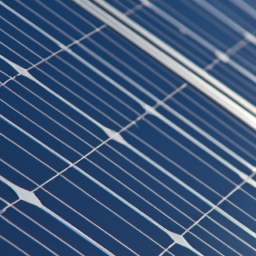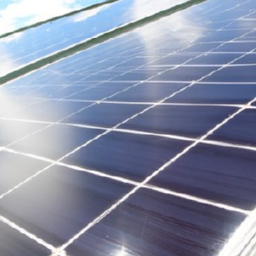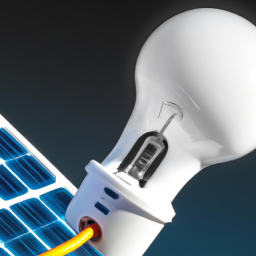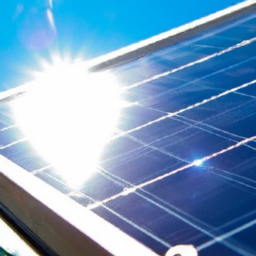Have you ever wondered what a solar generator is and how it actually works? Well, you’re in luck! In this article, we’re going to delve into the world of solar generators and discover how they work to provide power in an environmentally friendly way. So, get ready to expand your knowledge on this fascinating topic!
A solar generator is a device that harnesses the power of the sun to generate electricity. It consists of three main components: solar panels, a charge controller, and a battery. The solar panels are made up of photovoltaic cells that convert sunlight into electricity. These cells contain materials such as silicon, which create an electric current when exposed to sunlight.
So, when the sunlight hits the solar panels, it causes a flow of electrons, creating a direct current (DC). The charge controller then regulates the flow of this DC to the battery, which stores the excess electricity. This stored power can be used whenever needed, whether it’s during the night or on cloudy days when there is less sunlight available.
In the upcoming article, we’ll dive deeper into the intricacies of solar generators and explore their benefits, uses, and limitations. So, if you’re curious to learn more about how solar generators work, keep reading!
Overview of Solar Generators
Definition of a solar generator
A solar generator is a device that converts sunlight into usable electricity, providing power for various appliances and devices. Unlike traditional generators that rely on fossil fuels, solar generators harness the clean and renewable energy from the sun. They are an eco-friendly alternative and have gained popularity in recent years due to their numerous advantages.
Components of a solar generator
A solar generator consists of several key components that work together to generate and store electricity:
-
Solar Panels: These are the main component of a solar generator system. Solar panels are made up of photovoltaic (PV) cells that absorb sunlight and convert it into direct current (DC) electricity.
-
Battery Storage System: Solar generators utilize batteries to store the excess electricity generated by the solar panels. This stored energy can be used when there is no sunlight or during times of high demand.
-
Inverter: The inverter is responsible for converting the DC electricity produced by the solar panels and stored in the batteries into alternating current (AC) electricity, which is the standard household electricity used to power appliances and devices.
-
Charge Controller: The charge controller regulates the charge from the solar panels to the battery, preventing overcharging and extending the battery’s lifespan.
-
Generator Backup: In some solar generator systems, a generator backup is included to provide additional power during periods of low sunlight or high electricity demand. The generator is typically fueled by propane or gasoline and can be used in conjunction with the solar panels and batteries to ensure a continuous power supply.
Working principle of a solar generator
The working principle of a solar generator is relatively simple. When sunlight hits the solar panels, the PV cells within the panels absorb the energy and release electrons. This creates a flow of electricity, which is then directed to the batteries for storage.
The stored electricity can be used directly to power appliances and devices, or it can be converted into AC electricity using the inverter. The AC electricity can be used to run household appliances, charge electronic devices, or power tools.
The charge controller plays a crucial role in the solar generator system by monitoring and regulating the amount of charge going into the batteries. It prevents overcharging and ensures the batteries are not damaged.
During periods of low sunlight or high electricity demand, the generator backup can be used to supplement the power supply. The generator is started automatically when the battery charge drops below a certain level, ensuring a continuous flow of electricity.
Overall, the solar generator system works by harnessing solar energy, storing it in batteries, converting it into usable electricity, and providing a reliable and environmentally-friendly power source.
Solar Panels
Role of solar panels in a solar generator
Solar panels are the essential component of a solar generator system as they are responsible for capturing sunlight and converting it into electricity. The solar panels contain numerous PV cells, which are made up of semiconductor materials such as silicon.
When sunlight strikes the solar panels, the PV cells absorb the photons (particles of light) and release electrons. This process, known as the photoelectric effect, creates a flow of electricity. The generated electricity is then directed to the battery storage system for later use.
Types of solar panels
There are several types of solar panels available, each with its own advantages and limitations. The most common types are:
-
Monocrystalline solar panels: These panels are made from a single crystal structure and are known for their high efficiency. Monocrystalline panels have a uniform black appearance and are an excellent choice for applications where space is limited.
-
Polycrystalline solar panels: These panels are made from multiple crystals and are slightly less efficient than monocrystalline panels. Polycrystalline panels have a blue speckled appearance and are more affordable than monocrystalline panels.
-
Thin-film solar panels: These panels are made by depositing a thin semiconductor layer onto a substrate material. They are lightweight and flexible, making them suitable for curved or irregular surfaces. However, thin-film panels have a lower efficiency compared to crystalline panels.
Efficiency and capacity of solar panels
The efficiency of solar panels refers to the amount of sunlight that they can convert into electricity. Higher efficiency panels can generate more electricity for a given amount of sunlight, making them more effective in producing power.
The capacity of solar panels is measured in watts, and it indicates how much electricity the panels can produce under standard test conditions. The capacity of solar panels can vary depending on their size, efficiency, and the amount of sunlight available.
When choosing solar panels for a solar generator, it is important to consider both the efficiency and capacity. While higher efficiency panels may have a higher upfront cost, they can generate more electricity over time and provide a better return on investment.
Battery Storage System
Importance of battery storage in a solar generator
The battery storage system is a crucial component of a solar generator as it allows for the storage and utilization of solar-generated electricity, even when sunlight is not available. The batteries store the excess electricity produced by the solar panels during the day, which can be used during the night or on cloudy days.
Without a battery storage system, the generated electricity would have to be consumed immediately or be wasted. The batteries provide a reliable power source, ensuring a continuous supply of electricity even during periods of low sunlight or high electricity demand.
Types of batteries used in solar generators
There are several types of batteries used in solar generator systems, each with its own characteristics and suitability for different applications. The most common types of batteries used are:
-
Lead-acid batteries: These batteries have been used for many years in various applications and are relatively inexpensive. They can handle deep discharges and have a long lifespan, but they require regular maintenance and proper ventilation.
-
Lithium-ion batteries: These batteries have gained popularity in recent years due to their high energy density, longer lifespan, and lightweight design. Lithium-ion batteries have a higher upfront cost but require minimal maintenance and provide a reliable power source.
-
Saltwater batteries: These batteries use saltwater electrolytes and are considered a more environmentally-friendly option compared to lead-acid or lithium-ion batteries. They have a long lifespan and can be recycled easily, making them a sustainable choice.
Factors to consider when choosing a battery storage system
When selecting a battery storage system for a solar generator, several factors should be considered:
-
Capacity: The battery capacity determines the amount of electricity that can be stored. It should be based on the power requirements of the appliances and devices you wish to power. A larger capacity allows for longer usage times and can handle higher energy demands.
-
Lifespan: The lifespan of the battery affects the overall cost and performance of the solar generator system. It is important to choose batteries with a long lifespan to minimize the need for frequent replacements.
-
Depth of discharge: The depth of discharge refers to the amount of the battery’s capacity that can be used before recharging. Batteries with a higher depth of discharge can provide more usable electricity and offer greater flexibility.
-
Maintenance requirements: Some batteries require regular maintenance, such as checking the electrolyte levels or equalizing charges. Consider the maintenance requirements and ensure they can be easily managed.
When choosing a battery storage system, it is essential to consider your specific power needs, budget, and long-term goals. Consulting with a solar energy expert can help you determine the best battery system for your solar generator.
Inverter
Role of an inverter in converting solar energy into usable electricity
The inverter plays a crucial role in a solar generator system by converting the DC electricity produced by the solar panels and stored in the batteries into AC electricity. AC electricity is the standard form of electricity used in households and is compatible with most appliances and devices.
The inverter ensures that the electricity produced by the solar panels is in the correct form for consumption. It regulates the voltage, frequency, and waveform of the electricity, making it safe and usable for various applications.
Different types of inverters
There are several types of inverters used in solar generator systems, each with its own advantages and limitations:
-
String inverters: These inverters are typically used in larger solar installations and are connected to multiple solar panels in series. They are cost-effective but may suffer from reduced performance if one or more panels are shaded or not working properly.
-
Microinverters: Microinverters are installed on each individual solar panel, allowing for optimal power output from each panel. They are especially beneficial in installations with shading or multiple orientations, as their performance is not affected by the condition of other panels.
-
Power optimizers: Power optimizers are similar to microinverters but are installed at the module level. They optimize the power output of each solar panel and send it to a central inverter, which converts it into AC electricity. Power optimizers can improve system performance and allow for flexible design options.
The choice of inverter depends on various factors, including the size of the solar generator system, shading conditions, budget, and specific requirements. Consulting with a solar energy professional can help determine the most suitable inverter for your solar generator.
Impact of inverter efficiency on the performance of a solar generator
The efficiency of an inverter is an important factor to consider when evaluating the performance of a solar generator system. Inverter efficiency refers to how effectively the inverter converts DC electricity into AC electricity.
Higher efficiency inverters can convert a larger percentage of the electricity generated by the solar panels into usable AC electricity. This not only maximizes the power output but also reduces energy losses and increases the overall performance of the solar generator system.
Choosing an inverter with high efficiency can also improve the return on investment by maximizing the electricity generated and reducing the reliance on external power sources. It is important to select an inverter that matches the capacity and specifications of the solar panels and batteries to ensure optimal performance.
Charge Controller
Function of a charge controller in regulating the charge from solar panels to the battery
A charge controller is an essential component of a solar generator system as it regulates the charge from the solar panels to the battery. Its primary function is to prevent overcharging and ensure the batteries are not damaged.
The charge controller constantly monitors the voltage and current of the solar panels and adjusts the charge going into the battery accordingly. When the battery is fully charged, the charge controller prevents any further flow of electricity from the solar panels, preventing overcharging.
Types of charge controllers
There are two main types of charge controllers used in solar generator systems:
-
PWM (Pulse Width Modulation) charge controllers: PWM charge controllers regulate the charge flow by periodically interrupting the current flow between the solar panels and the battery. They are a cost-effective option, but they can cause some power loss due to the interruption.
-
MPPT (Maximum Power Point Tracking) charge controllers: MPPT charge controllers maximize the power output by continuously tracking the maximum power point of the solar panels. They adjust the voltage and current to match the optimal operating conditions of the panels, resulting in higher efficiency and power output.
MPPT charge controllers are more expensive than PWM controllers but offer greater efficiency and performance. They are especially beneficial in systems with varying shading conditions or multiple solar panel orientations.
Importance of a charge controller in preventing battery damage
A charge controller is crucial in preventing battery damage caused by overcharging or deep discharge. Overcharging can lead to the release of harmful gases and excessive heat, reducing the lifespan of the batteries.
Deep discharge, on the other hand, occurs when too much energy is drawn from the batteries, causing them to be discharged beyond their safe limits. This can result in irreversible damage and significantly shorten the battery lifespan.
By regulating the charge flow, a charge controller ensures that the batteries are charged optimally, preventing overheating and prolonging their lifespan. It also protects the solar generator system from potential damage and increases its overall reliability.
Generator Backup
Purpose of a generator backup in a solar generator system
In some solar generator systems, a generator backup is included to provide additional power during periods of low sunlight or high electricity demand. The generator backup acts as a secondary power source, ensuring a continuous supply of electricity when the solar panels cannot generate enough power or when the demand exceeds the capacity of the battery storage system.
The generator backup is typically fueled by propane or gasoline and can be automatically started when the battery charge drops below a certain level. It can be used to supplement the power supply and charge the batteries during extended periods of low sunlight.
Benefits and limitations of using a generator as a backup
Using a generator as a backup in a solar generator system offers several benefits:
-
Reliable power supply: The generator backup ensures a continuous supply of electricity, reducing the reliance on sunlight availability and providing power during prolonged periods of low sunlight or high energy demand.
-
Extended usage time: The generator backup can be used to charge the batteries, allowing for longer usage times when the solar panels cannot generate enough power.
-
Flexibility and versatility: The generator backup provides the flexibility to power high-energy appliances and devices that may exceed the capacity of the solar panels or batteries alone.
However, using a generator as a backup also has some limitations:
-
Cost and maintenance: Generators require fuel and regular maintenance, adding to the overall cost and maintenance requirements of the solar generator system.
-
Noise and emissions: Generators can be noisy and produce emissions, which may not be desirable in certain environments or applications.
-
Environmental impact: Fossil fuel-powered generators contribute to carbon emissions and air pollution, offsetting some of the environmental benefits of solar energy.
Factors to consider when selecting a generator for backup
When selecting a generator for backup in a solar generator system, several factors should be considered:
-
Fuel type: Different generators use different types of fuel, such as propane, gasoline, or diesel. Consider the availability, cost, and environmental impact of the fuel type.
-
Power output: The power output of the generator should match the power requirements of the appliances and devices you wish to power. Consider both the rated power output and the surge power output, which indicates the generator’s ability to handle sudden power spikes.
-
Noise level: Generators can produce varying levels of noise. Consider the noise restrictions in your area and choose a generator that meets the acceptable noise levels.
-
Run-time: The run-time of the generator determines how long it can operate on a full tank of fuel. Consider the expected usage time and choose a generator with an appropriate run-time.
Before selecting a generator for backup, consult with a solar energy professional to assess your specific power requirements and to ensure compatibility with your solar generator system.
Solar Generator Maintenance
Basic maintenance requirements for a solar generator
Regular maintenance of a solar generator is important to ensure optimal performance and longevity. Here are some basic maintenance requirements:
-
Regular inspection: Regularly inspect the solar panels, batteries, inverter, charge controller, and all electrical connections for any damage, loose connections, or signs of wear. Identify and address any issues promptly to prevent further damage or performance degradation.
-
Cleaning the solar panels: Keep the solar panels clean to maximize their efficiency. Remove any dirt, debris, or snow that may accumulate on the panels, as they can significantly reduce the amount of sunlight reaching the PV cells.
-
Battery maintenance: If using lead-acid batteries, monitor the electrolyte levels regularly and top up with distilled water if necessary. Ensure the batteries are kept in a cool and well-ventilated area and avoid overcharging or deep discharging.
-
Check the charge controller: Monitor the operation of the charge controller and ensure it is functioning properly. Check for any error codes, unusual behavior, or warning indicators and address any issues promptly.
-
Inverter maintenance: Check the inverter for any abnormalities such as unusual noises, error codes, or reduced performance. Clean the ventilation ports to maintain proper airflow and prevent overheating.
Regular maintenance of the solar generator system will help maximize its efficiency, prolong its lifespan, and ensure a reliable and continuous power supply.
Regular inspection and cleaning of solar panels
Regular inspection and cleaning of the solar panels are essential to maintain their performance. Here are some steps to follow:
-
Visual inspection: Visually inspect the solar panels for any cracks, damage, or signs of wear. Check the mounting hardware and connections for any loose or damaged parts.
-
Check for shading: Ensure there are no objects or vegetation that cast shadows on the solar panels. Shading can significantly reduce the power output of the panels, so it is important to keep the surrounding area clear.
-
Clean the panels: Use a soft cloth or sponge to clean the surface of the solar panels. Avoid using abrasive materials or harsh chemicals that can scratch or damage the panels. If there is stubborn dirt or residue, use a mild soap and water solution.
-
Remove snow or ice: If the solar panels are covered in snow or ice, gently remove it using a soft brush or a plastic snow removal tool. Do not use sharp objects or excessive force, as it can damage the panels.
Regular inspection and cleaning of the solar panels will help maintain their efficiency and ensure optimal power generation.
Checking and replacing battery cells
If using lead-acid batteries in the solar generator system, regular maintenance and monitoring of the battery cells are necessary. Here are some steps to follow:
-
Visual inspection: Visually inspect the battery cells for any signs of corrosion, leakage, or damage. Check the battery terminals for any loose connections or buildup of dirt and ensure they are clean and secure.
-
Electrolyte level check: If the battery is not maintenance-free, check the electrolyte levels regularly. Use a hydrometer to measure the specific gravity of the electrolyte and top up with distilled water if the level is low.
-
Equalize charging: Perform an equalize charge periodically to balance the charge across all the battery cells. This helps improve the overall performance and lifespan of the batteries.
-
Battery replacement: Over time, batteries may lose their capacity or fail due to age or other factors. If the batteries are no longer holding a charge or experiencing significant deterioration, it may be necessary to replace them to maintain the performance of the solar generator system.
Battery maintenance and replacement should be conducted according to the manufacturer’s recommendations and guidelines. It is recommended to consult with a solar energy professional for proper maintenance procedures and to ensure optimal battery performance.
Advantages of Solar Generators
Clean and renewable source of energy
One of the biggest advantages of solar generators is that they harness the clean and renewable energy from the sun. Solar energy is a virtually unlimited resource and does not produce any harmful greenhouse gas emissions or air pollution. By using a solar generator, you can reduce your carbon footprint and contribute to a more sustainable future.
Portable and versatile power solution
Solar generators are portable and can be used in various locations, making them a versatile power solution. Whether you are camping, traveling, or working remotely, a solar generator provides a reliable and convenient source of electricity. It eliminates the need for cumbersome extension cords or the reliance on traditional grid electricity.
Reduced electricity costs
By generating your own electricity with a solar generator, you can reduce or even eliminate your dependence on the traditional electricity grid. This can result in significant savings on your electricity bills, especially in areas with high electricity rates. Over time, the savings from reduced electricity costs can offset the initial investment in the solar generator system.
Disadvantages of Solar Generators
Initial high cost of installation
One of the main disadvantages of solar generators is the initial high cost of installation. The solar panels, batteries, inverters, and other components can require a substantial upfront investment. However, it is important to consider the long-term cost savings and the potential return on investment over the lifetime of the system.
Dependence on sunlight availability
The availability of sunlight directly impacts the power output of solar generators. During periods of low sunlight, such as at night or during cloudy days, the power generation may be reduced. This reliance on sunlight availability may require additional measures, such as a generator backup or grid connection, to ensure a continuous power supply.
Storage limitations of battery capacity
The battery storage capacity of solar generators is limited and determines the amount of power that can be stored for later use. If the power demand exceeds the battery capacity, the generator backup or an alternative power source may be required. It is important to consider the power requirements and adjust the system capacity accordingly to meet the desired usage.
Conclusion
In conclusion, a solar generator is a device that harnesses the power of the sun to generate electricity. It consists of solar panels, battery storage, an inverter, charge controller, and may include a generator backup. Solar generators provide numerous advantages, including clean and renewable energy, versatility, and reduced electricity costs.
The solar panels convert sunlight into electricity, which is stored in the batteries. The inverter converts the DC electricity into AC electricity, making it usable for various appliances and devices. The charge controller regulates the charge flow to the battery and prevents overcharging. A generator backup can be used during periods of low sunlight or high energy demand to ensure a continuous power supply.
Regular maintenance is essential to maximize the performance and lifespan of a solar generator system. This includes inspecting and cleaning the solar panels, checking and replacing battery cells, and ensuring the proper functioning of the inverter and charge controller.
While solar generators have some disadvantages, such as the initial high cost of installation and dependence on sunlight availability, they offer a sustainable and efficient energy solution. Considering the advancements in solar generator technology, it is likely that we will see further improvements in efficiency, capacity, and affordability in the future. By embracing solar generators, you can contribute to a greener and more sustainable future while enjoying the benefits of clean and renewable energy.




